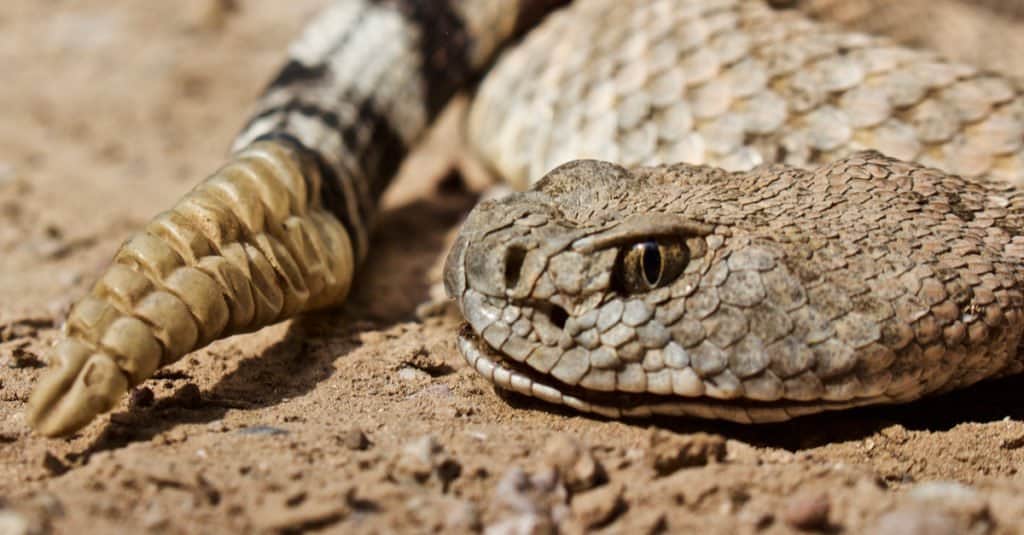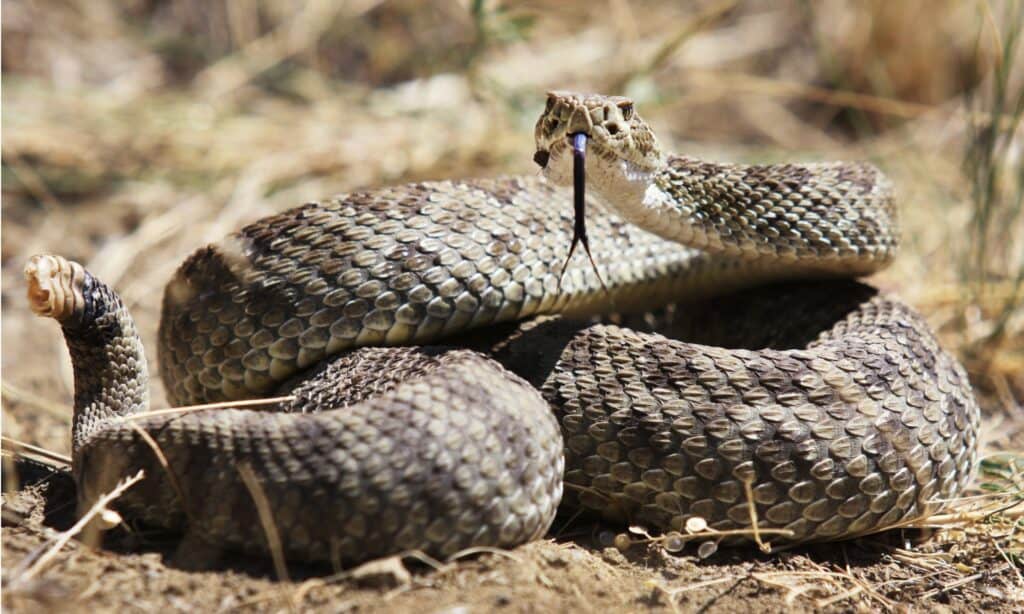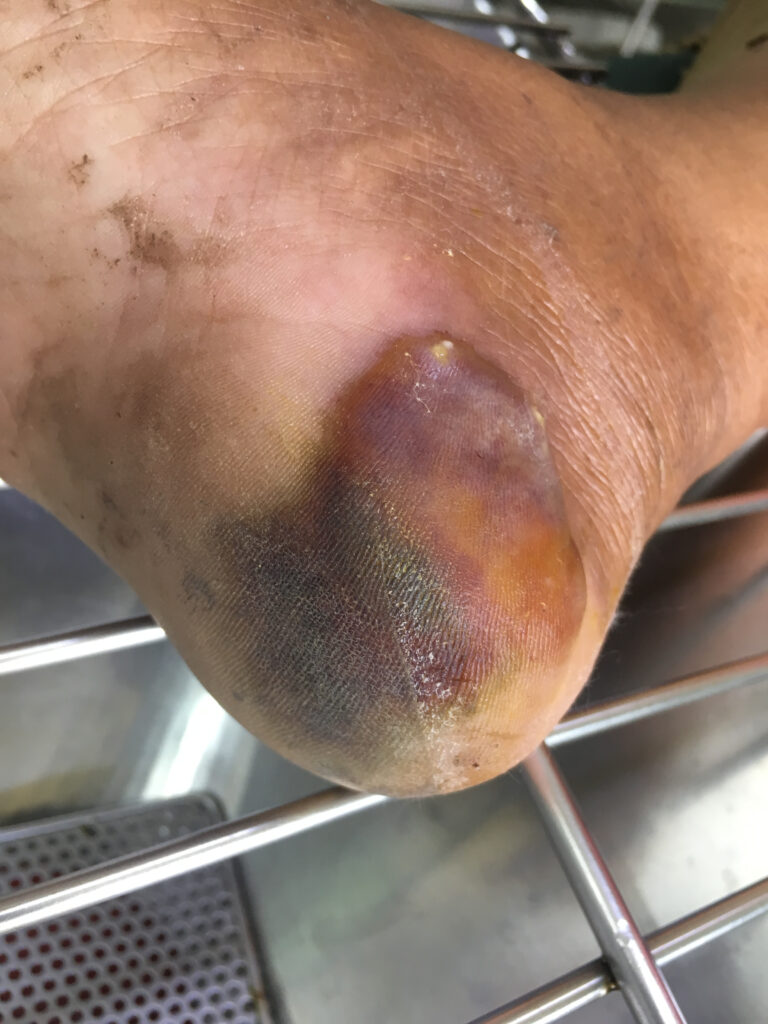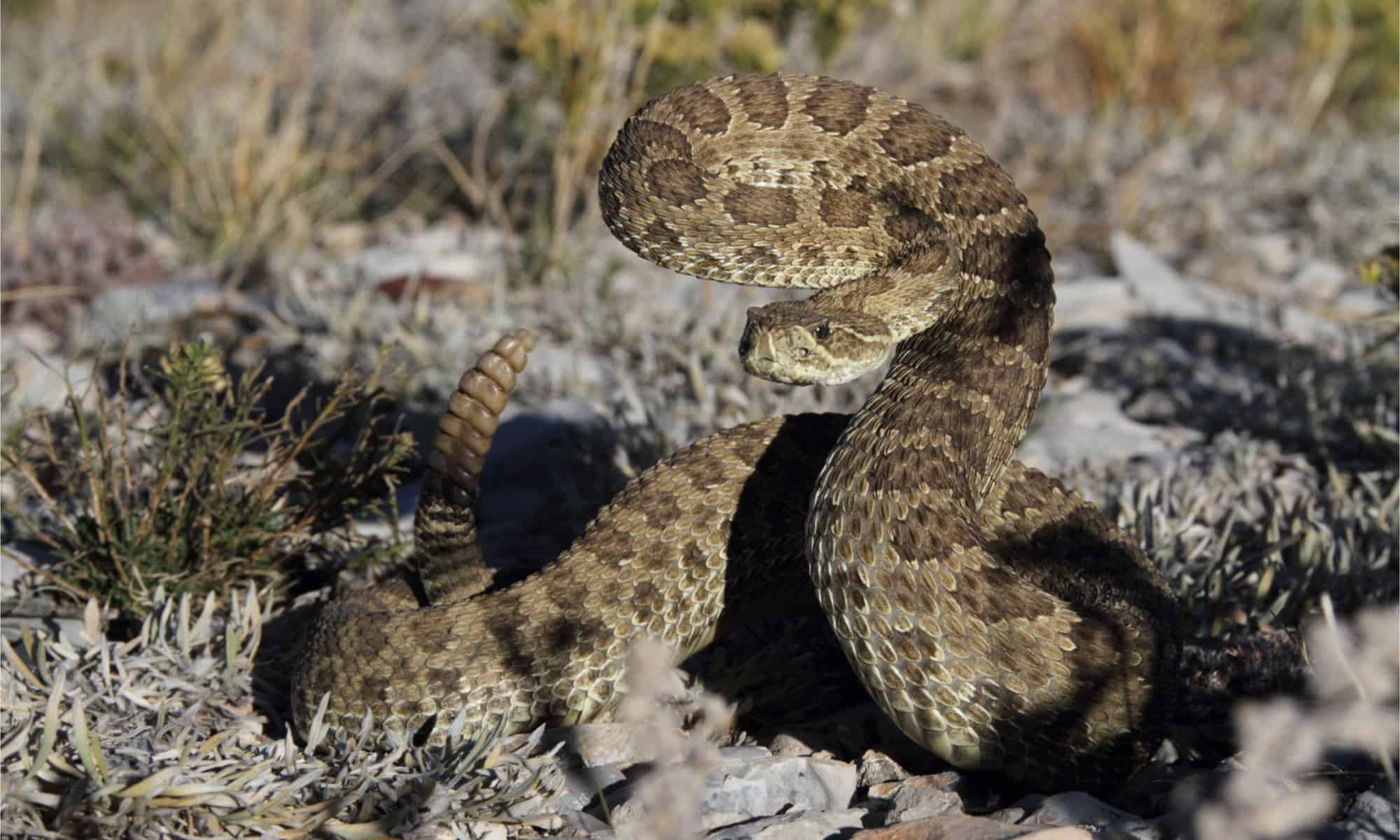
A wild Prairie
Rattlesnake
poses in the strike position in the plains.
©iStock.com/Matt Kaminski
A lot of folks just don’t get rattlesnakes. There’s this fear that they’ll come looking for humans to bite and kill them. But the reality is that despite being pit vipers and venomous snakes, they’re actually non-aggressive and would much rather never encounter a human. Ever.
But because humans have invaded their territory throughout the United States, rattlers are responsible for the most snakebites in the country. They are dangerous animals that may easily kill humans with their venom if a bite goes untreated.
Several rattlesnake species live throughout the USA, but only one lives in Montana.
Let’s take a look at Montana rattlesnakes and see when they’re most active, how to avoid them, and what to do when you can’t.
When Do Montana Rattlesnakes Show Up?

Prairie rattlesnakes need warmth, so they wait for spring to emerge from brumation.
©DMartin09/Shutterstock.com
Rattlesnake season in Montana begins in late March or early April, depending on the weather any given year. This means that the rattlesnake has finished its brumating period for the year and is ready to come out and search for food again – and a mate.
Brumating is similar to hibernating. Rattlesnakes slither down into their dens, often with tens or even hundreds of other rattlesnakes, and settle in for the colder months. They slow down their metabolism and sleep through the coldest months of the year.
Then, in springtime, they’re ready to start up again. Out they come, in search of food, water, sunlight, and maybe a mate.
Rattlesnakes in Montana remain out of their dens for the most part from early spring until September when it’s time to get cozy again and sleep.
What Time of Day Are Montana Rattlesnakes Active?

Prairie rattlesnakes are also called western rattlesnakes.
©iStock.com/HRossD
Certain types of animals as known as crepuscular creatures. Rattlesnakes are among them, and this means that they come out at any time of day or night. The weather makes a big difference in what they’re up to, as too hot temperatures make them sleepy (like humans!) and too cool make them need some extra warmth found only in dens. So, if the weather’s optimal for them, they could appear at daytime, nighttime, dusk, or dawn.
When the weather’s good, they’re going to come out of their dens based on animal activity around them. They don’t need to eat every day – in fact they only need a good solid meal once every one or two weeks.
Overall, rattlesnakes are most likely to come out during sunrise and sunset times. This is when they typically find the best prey, but not always.
Montana’s Only Rattlesnake: The Prairie Rattler (or Western Rattler)

Prairie rattlers come in several shades, though the spade-shaped head and patterns help identify them anyway.
©DMartin09/Shutterstock.com
Sometimes called the Western rattlesnake or rattler, the Prairie rattlesnake is the only rattlesnake found in the great state of Montana. The snakes live all over the state, though they prefer dry, rocky habitats, tall grass regions, ponderosa pine forests, and mixed-grass coniferous forests. They’ll also sometimes take up residence along rivers, though usually just for a time.
It should be noted that there’s one spot in Montana where you won’t find these guys: the northwestern corner of the state, in and near Glacier National Park.
Rattlesnakes, in general, prefer basking in sunlight on southern-facing rocky slopes, as this gives them the best opportunity to warm up.
What Do Prairie Rattlers Look Like?

Prairie rattlesnakes have a cream, pale-yellow, or white belly.
©Nina B/Shutterstock.com
With thin necks and triangular heads, Prairie rattlers are fairly distinctive and easy to identify for the most part. Behind each eye, a dark stripe borders on both sides with a white stripe and they have a second set of “nostrils” between their eyes. These “nostrils” are actually what give them the classification of pit viper. They’re known as pits, which are heating sensing organs that let them find prey and avoid predators.
Hinged fangs that fold back against the roof of the mouth give them an eerie look. Their bodies are thick and heavy and grow between 15 and 60 inches in length. Montana rattlesnakes lean towards the larger end. Keeled scales cover their bodies, giving them a texturized ridge down the middle. The coloration of their scales varies, though, with tan, brown, pale or olive green for a base, and black or brown splotches running down their backs. They have small blotches along their sides, as well, plus pale-yellow or white bellies. And, of course, the tell-tale rattles at the end of their tails.
What to Do if You Encounter a Prairie Rattlesnake
Unless they feel threatened, prairie rattlesnakes are very unlikely to bite a human. They are not aggressive, man-hunting machines. But rather, they’d like to be left alone. They’re shy and don’t want to be bothered.
Most rattlesnake bites occur because of two things: accidental contact or intentional handling by humans.
When rattlesnakes are harassed, they’ll strike. If a person attempts to pick one up, the rattlesnake will see this as a threat and it will strike. When a person steps on or accidentally puts their hand on a prairie rattler, the snake will bite.
If you are out in the wild somewhere and see a Montana rattlesnake, back away slowly and calmly. Don’t hang around, don’t snap photos, and don’t approach the snake under any circumstances.
Avoid contact with rattlesnakes by:
- Remaining alert while you hike. Look ahead on the trail to make sure you’re not coming on a snake. Check a bench before sitting on it. Verify there are no snakes on the rocks where you’re scrambling over.
- Stick to designated trails and take particular care when nearing rock piles, logs, and long grass locations.
- Step onto rocks and logs, instead of stepping over them. Rattlesnakes often rest behind or near these objects.
- Never stick your hands or feet into areas that you cannot see clearly.
- Wear protective shoes with closed toes that extend above the ankle.
- If possible, wear loose-fitting, long pants with a tight weave when hiking. These can help prevent snake bites to the lower leg.
- Maintain a safe distance of at least 15 to 20 from a snake if you spot one. If you must walk around a rattlesnake, ensure the area you’re walking through does not contain another snake.
- Keep pets on leashes and never let them investigate on their own.
- Never attempt to pick up a dead rattlesnake. Freshly killed snakes contort and shift and may strike, biting you and injecting venom.
What to Do if You Are Bitten by a Montana Rattlesnake

Most bites occur when humans accidentally step on or near a rattlesnake or attempt to handle or kill one.
©Chuanpit/Shutterstock.com
The venom of a rattlesnake is deadly when a bite is not properly treated by medical providers. If you are bitten, certain things will help you survive.
- Remain calm and move slowly.
- Never run – increased exertion increased venom absorption.
- If possible, immobilize the area that has been bitten. Use a splint or sling and apply loose pressure without cutting off circulation.
- Remove any jewelry or clothing that restricts the area as it swells.
- Keep the bite lower than the heart.
- Slowly and calmly return to a vehicle and go to the hospital or nearest emergency room.
- Call the emergency room ahead, if possible, to notify them of your impending arrival.
- Do not use ice, heat, or a tourniquet on the bite.
- Do not attempt to extract the venom.
- Do not attempt to capture the snake.
- Do not consume any alcohol.
Discover the "Monster" Snake 5X Bigger than an Anaconda
Every day A-Z Animals sends out some of the most incredible facts in the world from our free newsletter. Want to discover the 10 most beautiful snakes in the world, a "snake island" where you're never more than 3 feet from danger, or a "monster" snake 5X larger than an anaconda? Then sign up right now and you'll start receiving our daily newsletter absolutely free.
Thank you for reading! Have some feedback for us? Contact the AZ Animals editorial team.








